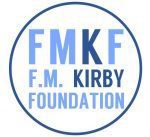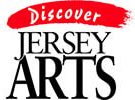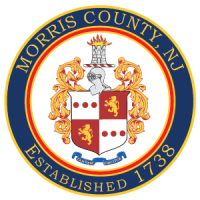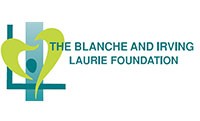Glenn Miller
“A band ought to have a sound all of its own. It ought to have a personality.” – Glenn Miller
Alton Glenn Miller was born in Clarinda, Iowa on March 1, 1904. But it was in North Platte, Nebraska, several years later that Glenn actually got his musical start when, one day, his father brought home a mandolin. Glenn promptly traded it for an old battered horn, which he practiced every chance he got. In fact his mother worried, “It got to where Pop and I used to wonder if he’d ever amount to anything.”
In 1923, Miller entered the University of Colorado, although he spent more time traveling to auditions and playing where and whenever he could. After flunking three of his five courses one semester, Glenn dropped out to concentrate on his career as a professional musician.
He toured with several orchestras and ended up in Los Angeles where he landed a spot in Ben Pollack’s group, a band that included a guy named Benny Goodman. Here, Miller also got the chance to write some arrangements. Arriving in New York City, he soon sent for, and married his college sweetheart, Helen Burger in 1928, and for the next three years, earned his living as a free-lance trombonist and arranger.
Miller played and recorded with the likes of Tommy and Jimmy Dorsey (who on several of their records, featured an up-and-coming singer by the name of Bing Crosby), Gene Krupa, Eddie Condon and Coleman Hawkins. In addition, during that time, Glenn cut 18 sides for Goodman, and also worked for radio studio conductors like Victor Young, Carl Fenton and Jacques Renard. In 1934, Miller became the musical director of the Dorsey Band, and later went on to organize The Ray Noble Orchestra, which included such players as Charlie Spivak, Peewee Erwin, Bud Freeman, Johnny Mince, George Van Eps and Delmar Kaplan, among others.
In April 1935, Glenn Miller recorded, for the first time, under his own name. Using six horns, a rhythm section and a string quartet, he recorded “Moonlight on the Ganges” and “A Blues Serenade” for Columbia. But selling only a few hundred records, he continued his position with the Noble Orchestra.
In 1937, Glenn Miller stepped out to form his own band. There were a few recordings — one for Decca and one for Brunswick — a couple of week-long stints in New Orleans and Dallas, and many one-nighters, but it was not to be. Though the group would play one more date several days later in Bridgeport, Connecticut, Glenn gave his men their final notice on New Year’s Eve at the Valencia Ballroom in York, Pennsylvania. Broke, depressed and having no idea what he was going to do, he returned to New York City.
It is said that Miller could never remember precisely the moment he decided to emphasize his new reed section sound. But it was during this disheartening interim, that he realized the unique sound — produced by the clarinet holding the melodic line while the tenor sax plays the same note, and supported harmonically by three other saxophones — just might be the individual and easily recognizable style that would set his band apart from all the rest.
Formed in March 1938, the second Glenn Miller Orchestra — which would later include the likes of Tex Beneke, Marion Hutton, Ray Eberle, Paul Tanner, Johnny Best, Hal McIntyre, and Al Klinck — soon began breaking attendance records all up and down the East Coast. At the New York State Fair in Syracuse it attracted the largest dancing crowd in the city’s history. The next night it topped Guy Lombardo’s all-time record at the Hershey Park Ballroom in Pennsylvania. The Orchestra was invited by ASCAP to perform at Carnegie Hall with three of the greatest bands ever — Paul Whiteman, Fred Waring and Benny Goodman — and created more of a stir than any of them.
There were record-breaking recordings, as well, such as “Tuxedo Junction”, which sold 115,000 copies in the first week. “In the Mood”, and “Pennsylvania 6-5000?, all appearing on the RCA Victor Bluebird label. In early 1940, Down Beat Magazine announced that Miller had topped all other bands in its Sweet Band Poll, and capping off this seemingly sudden rise to the top, there was, of course, Glenn Miller’s “Moonlight Serenade” radio series for Chesterfield cigarettes which aired three times a week over CBS. In 1941, it was off to Hollywood where the band worked on its first movie, “Sun Valley Serenade”, which introduced the song — and soon-to-be million selling record –”Chattanooga Choo Choo”, and featured the Modernaires and the Nicholas Brothers. Then came “Orchestra Wives”. But the war was starting to take its toll on many of the big bands as musicians, and the rest of country’s young men, began receiving draft notices.
On October 7, 1942, Alton Glenn Miller reported for induction into the Army and was immediately assigned to the Army Specialist Corps. His appointment as a Captain came after many months of convincing the military higher-ups that he could modernize the army band and ultimately improve the morale of the men. His training complete, he was transferred into the Army Air Corps, where he ultimately organized the Glenn Miller Army Air Force Band. Miller’s goal of entertaining the fighting troops took another year to be realized, but in late 1943 he and the band were shipped out to England.
There, in less than one year, the Glenn Miller Army Air Force Band engaged in over 800 performances. Of these, 500 were broadcasts heard by millions. There were more than 300 personal appearances including concerts and dances, with a gross attendance of over 600,000.
But Glenn was not to participate in the final six months of these activities.
In the Fall of 1944, the band was scheduled to be sent on a six-week tour of Europe and would be stationed in Paris during that time. Miller decided to go ahead, in order to make the proper arrangements for the group’s arrival. And so, on December 15th, Glenn Miller boarded a transport plane to Paris, never to be seen again.
In his book “Glenn Miller & His Orchestra”, George Simon wrote this about the man. “His favorite author was Damon Runyon. His favorite book was the Bible. Spencer Tracy and Olivia de Havilland were his favorite movie actor and actress. His big loves were trout fishing, playing baseball, listening to good music, sleep and money. His pet hates were bad swing, early-morning telephone calls (he liked to sleep from 4 a.m. to noon), and the phrase ‘goodbye now’. His favorite quotation, one he stated, was not from the Bible, nor from Runyon, but from Duke Ellington: ‘It Don’t Mean a Thing If it Ain’t Got that Swing!’
The Diamonds
In 1957 The Diamonds released an instant million selling hit called “Little Darlin’.” The song continues to sell worldwide and has been dubbed “the National Anthem of Rock and Roll”. To date it has sold approximately 20 million copies.
Through the years since the release of “Little Darlin’” The Diamonds have learned one important lesson—the durability of this classic rock and roll music is as much about the future as it is about the past. As a result, The Diamonds continue to expand their audience to this day, performing in a variety of venues and settings worldwide. These performances include—with Symphony Orchestras, in Performing Arts Theatres and major concert halls, on cruise ships, in casinos, at county and state fairs, on tours of England, Ireland, Brazil, Chile, Korea, and Japan, for benefit concerts, corporate conventions and at nightclubs. “We’ve been pleased to find a growing audience among all age groups. They love songs they can understand, remember and actually sing the words to—today, tomorrow, or even 20 years from now.”
A major reason for The Diamonds’ longevity as performers and entertainers lies in the diverse backgrounds of the individual members of the group. A very recent addition to the group is tenor Sean Sooter. Sean received his early performance training with the highly acclaimed national touring group, The Young Americans – performing in eight U.S. tours and as well as Japan. Sean went on to work as a featured vocalist aboard the MS Noordam with Holland America Cruise Lines. Some of his favorite production credits include various productions of “Forever Plaid” in Los Angeles and Orange County, CA, as well as performing with the “Dapper Dans of Disneyland.” Sean has served as musical director for numerous musical productions including Five Guys Named “Moe,” “Little Shop of Horrors” and “Xanadu.” He earned his BA in Music Education from California Baptist University and a Master of Arts degree in Education through Azusa Pacific University. Sean worked for six years as a high school music teacher before joining The Diamonds – following his dream of singing with “one of the best vocal groups in show business today.” Sean’s wide array of talents has made his addition to The Diamonds’ lineup a real plus—for both the group and their loyal fans!
Lead singer Jerry Siggins has accumulated some impressive credits of his own. Jerry has worked throughout the United States, Japan, and Australia as a singer and actor. He spent five summers at Jackson Hole’s Pink Garter Theater and has guest starred on The Tonight Show, Tony Orlando and Dawn, and The Love Boat. Before setting down roots as a permanent member of The Diamonds in 1991, Jerry enjoyed a successful career as an actor in television commercials and was actively involved in Southern California theatre. He sang in a doo-wop group called Danny and The Dappers and was a mainstay at Disneyland and Disney World as a vocalist with The Dapper Dans vocal quartet for years.
The newest addition to The Diamonds is bass singer Jeff Dolan. Jeff has worn many musical hats in his career — first as a member of the sensational vocal jazz group “Beachfront Property,” then as the bass singer and vocal contractor for Ray Conniff, touring internationally for ten years. Jeff was a member of the “Dapper Dans of Disneyland,” worked as a Christmas caroler for 25 years and has appeared on over 25 CDs. He has numerous recording credits including a Grammy award and singing with the Phoenix Chorale. He has graced the musical theatre stage in both Phoenix and Southern California, and served as the artistic director of the Tucson Barbershop eXperience Chorus. But for sure, Jeff’s greatest accomplishments are his kids — Danny, Bonnie, Hayley and Claire!.
Baritone singer Gary Owens has spent the longest time as a Diamond joining forces with bass singer John Felton in 1973. A well-rounded musician, Owens learned his craft as a journeyman bass player around Los Angeles while earning his undergraduate degree in music at California State University, Long Beach. In the early 1980’s, Owens took a brief hiatus from The Diamonds to complete his Master’s Degree in Business Administration at the University of Southern California. Besides singing, and playing saxophone and flute, Owens does much of the vocal arranging for The Diamonds. In that capacity, he is well aware of the group’s particular effectiveness. “Our goal has always been to keep that classic Diamonds’ sound intact. Although The Diamonds are four distinctive individuals,” he notes, “we have created one strong group personality. The four of us as a unit have a special chemistry, and it is that chemistry that gives us our unique identity.”
The standing ovations and return engagements are the proof; The Diamonds have taken the Classic Rock and Roll genre to a whole new level. The Diamonds truly are a cut above!







